Autism, a High Risk of Hearing Loss
Individuals with a diagnosis of autism have a high risk of hearing loss contributing to sound intolerance and visual processing difficulties. Many of the behavioral characteristics associated with autism are also associated with auditory and visual processing difficulties.
Enhancing Relationships through Communication
An insightful report, your Moore Auditory-Visual Questionnaire Report, shares the intensity of behavioral difficulties associated with sound intolerance, hearing loss, auditory processing, and visual processing difficulties.
Bridge the communication gap between you, loved ones, and professionals by working with Cheri Moore.
It has been my privilege to successfully co treat patients with Cheri Moore over the last few years. I have found her to be extremely knowledgeable about vestibular and auditory processing systems. In addition to her background in special education, she has broad experience working with specialists in addressing a wide variety of diagnosis. This positions her so well to apply her therapy appropriately. Furthermore I have personally witnessed her tenacity in going well beyond the expected in working with her clients to ensure complete resolution of their difficulties.
Dr. Neil W. Margolis, O.D., F.A.A.O., F.C.O.V.D.
Rate of Autism in America
According to a national survey conducted by the Center for Disease Control and Prevention, the rate of diagnosis with autism was:
In 2018, one out of every 59 children, eight years of age.
In 2013, one out of every 50 children, 6 to 17 years of age. (Centers for disease control & prevention, (2013). Special education or early intervention services (table 17) and Learning disability or ADHD (Table 3)(Series 10, 2&).
Berard-based Auditory Integration Training Strengthens Neural Pathway
Researchers in two different studies found stronger auditory neural pathway scores after auditory integration training. In addition, parents also reported improvements in sound tolerance. Berard-based Auditory Integration training reduces sound intolerance often found in individuals with autism, dyslexia, and attention deficit hyperactivity disorder.
iLs Integrated Listening Benefits
The Researchers from the Spiral Foundation in 2012, used iLs Integrated Listening programs with 18 children with a diagnosis of autism. Pre and Post testing showed improvements in the following areas:
- Social skills and emotional regulation
- Decrease in atypical and problem behaviors
- Decrease in number and severity of autistic behaviors
- Improved overall functional adaptive behavior skills
Autism and Lack of Progress
After Cheri provided Berard-based Auditory Integration Training, a lack of improvement occurred in several clients. Some of these clients have a diagnosis of autism. Interestingly, Cheri found that clients with autism and sound intolerance also had many behavioral characteristics of hearing loss. Cheri also noticed they failed to make excellent progress in vision therapy, avoided swinging and riding their bike. However, after clients began to wear hearing aids, they made progress in vision therapy. With joy, Cheri learned they started riding their bikes. Later, they met all vision therapy goals. Six months apart, clients completed Berard-based Auditory Integration training. Hearing aids are consistently worn except during a thirty-minute listening program. Over time, clients experienced improved tolerance to sounds.

Overcoming CAPD with Autism
My daughter was diagnosed with autism and central auditory processing disorder (CAPD). We schooled her at home, and even with my background in teaching, it was very difficult. I would have to fight with her to make her begin her school work. While teaching her, she...
A Future for My Daughter: Diminishing L.D. / Sound Sensitivities
Ashylyn did not talk much when she was little and was shy about interacting with people. I sent her to a private Christian school for kindergarten hoping she would come out of her shell. Unfortunately, there were more problems than just shyness. I remember feeling...
CAPD Diagnosis at 21 years; Success with Hearing Aids and AIT
Finding out that my 21-year-old son had a hidden hearing loss (CAPD) was a relief. He is very intelligent. Not getting the right help was causing feelings of depression and hopelessness. Finally, an answer to the questions I have had for so long! He never really fit...
A Relieved Grandmother: CAPD Success with Hearing Aids
I was at my wit’s end when I met Cheri Moore. My oldest granddaughter, whom I had guardianship, had been tested for every possible psychological learning disability, including autism. She was prescribed medication, which did not seem to help. Still, no diagnosis. I...
A Mother’s Journey Into the World of Dyslexia
Diagnosing Dyslexia During the spring of 2007, I attended Dianne Craft’s conference where I learned that dyslexia affected the auditory processing center and the visual processing center. Perhaps I had found help for my daughter’s reading and spelling struggles. She...
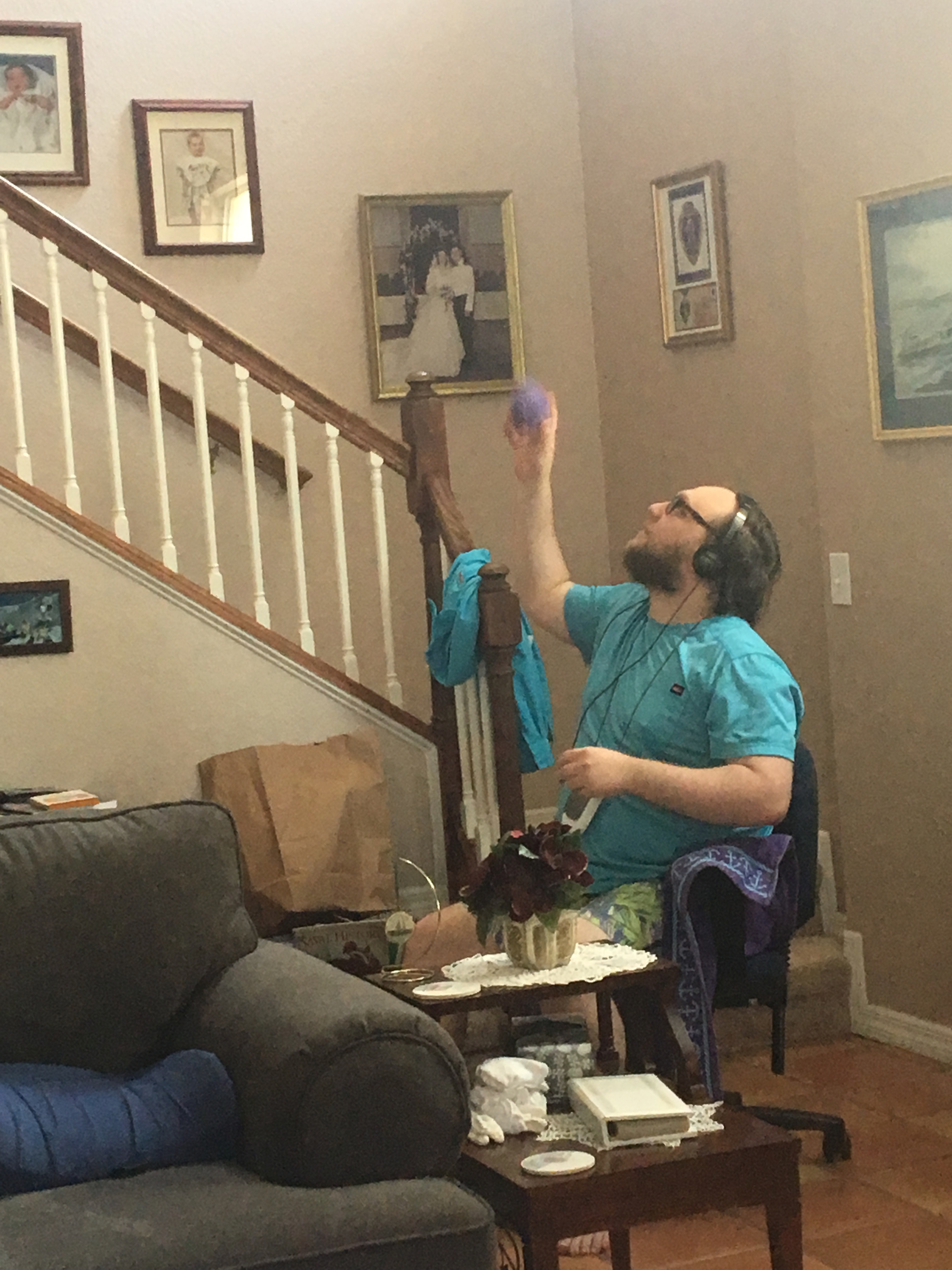
You rock! You are making the world a better place and I am so thankful for you!
Higher Risk of Hearing Loss
Astonishingly, a 12-year study in Sweden found hearing loss at a higher rate in 199 children (153 boys, 46 girls) diagnosed with autism (21-7 yrs.) when compared to studies researching hearing loss in typically developing children. Interestingly, researchers found several different types of hearing loss.
- Mild to Moderate Hearing Loss in the cochlea – Testing of inner cochlea hairs required a response
- Severe to Profound Central Hearing Loss – Auditory Brainstem Response Test (ABR) assesses the inner ear’s cochlea and auditory pathways to the brain – requires no response
- Conductive Hearing Loss from ear infections negatively affects eardrum movement and middle ear bone movements – testing requires no response (Rosenhall, U., Nordin, V, Sandstrom, M., Ahlsen, G., Fillberg, C., 1999. Autism and hearing loss. Journal of Autism and Developmental Disorders. 29:5)
In addition, researchers also found that studies of typically developing children found much lower percentages (0.1% – 0.2%) of pronounced and profound hearing loss (Braden, 1994; Davis, Wood, Healy, Webb, Rowe, 1995; Kankkunen, 1982; Martin et al., 1981; Parving, 1983; Sehlin et al., 1990; van Rijn, 1989).
Benefits of Hearing Aids
Today’s technological advances in audiology have resulted in hearing tests that require no response. Thus, it is possible for individuals with limited or no speech to complete hearing tests. Likewise, hearing aid technology and research shows benefits of Roger Hearing FM devices for individuals diagnosed with autism.

In conclusion, the chart below shows the percentage of different types of hearing loss found in children with autism. Overall, individuals diagnosed with autism have a much higher risk of hearing loss. Cheri works with you to advocate and prepare your loved one for hearing tests requiring no response.
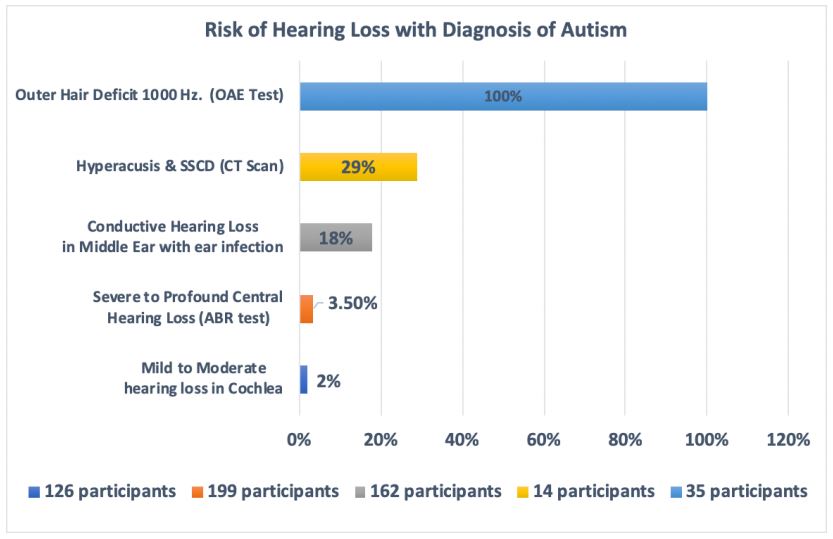
Bone Anomaly Found in the Inner Ear’s Vestibular System
Amazingly, researchers found a bone anomaly in participants’ inner ear vestibular canals called “superior semicircular canal dehiscence syndrome (SSCD)” in 29% out of 14 participants with a diagnosis of autism and hypersensitivity to sound. Sadly, this can cause a hearing loss due to disruption of sound energy to inner ear hair cells. (Thabet, EM., Zaghloul, HS., (2013).
Auditory profile and high-resolution CT scan in autism spectrum disorders children with auditory hypersensitivity. European Arch Otorhinolaryngology. doi: 10.1007/s00405-013-2482-4. Epub2013 Apr 12)
In the ear diagram, numbers 13 and 15 labels the vestibular system.
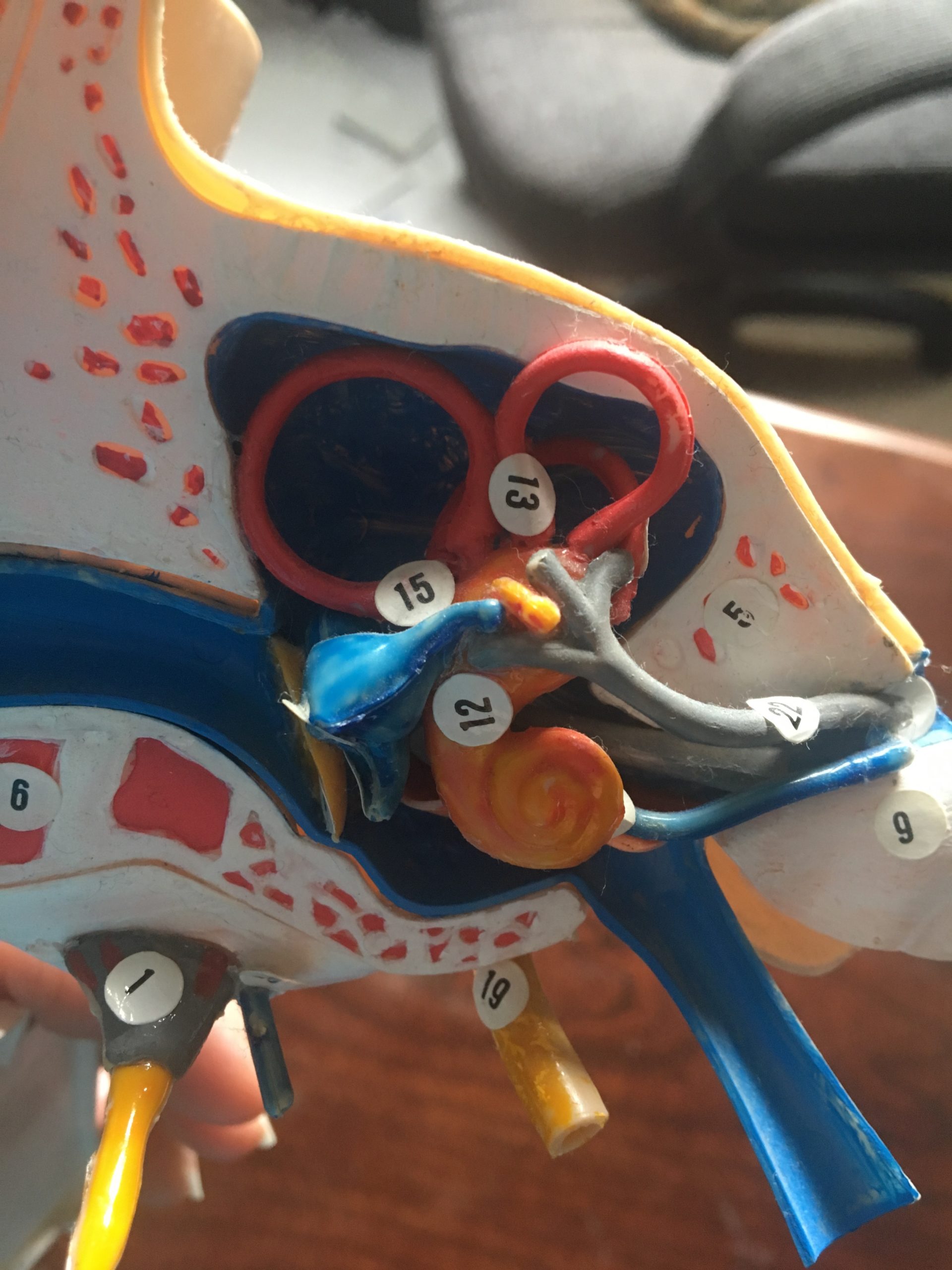

The Moore Auditory-Visual Observation Activity Booklet teaches you, how to observe and what to observe, helping you recognize visual processing difficulties like strabismus.
Strabismus is when both eyes do not line up together.
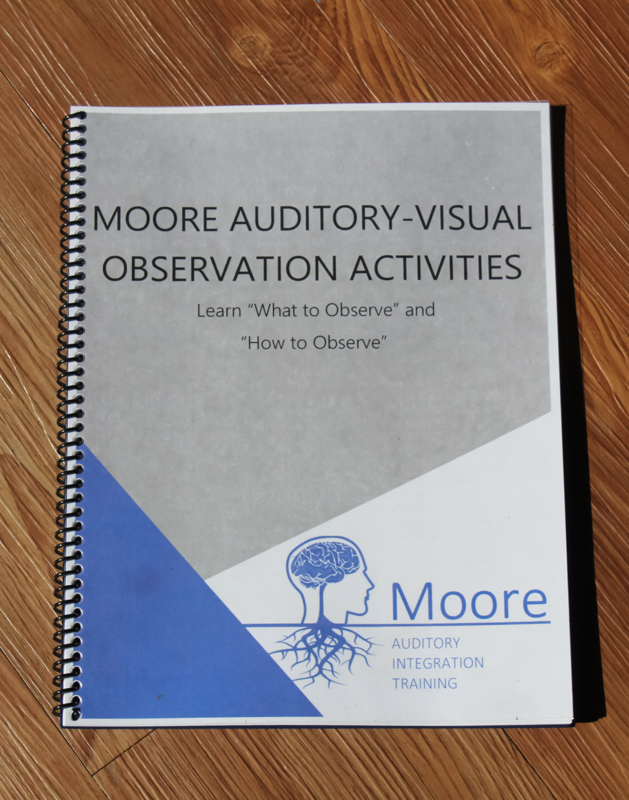
One eye is closer to the nose.
One eye is closer to the ear.
One eye floats up
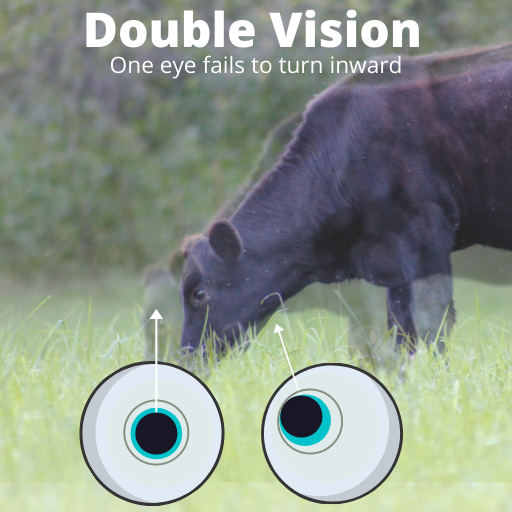
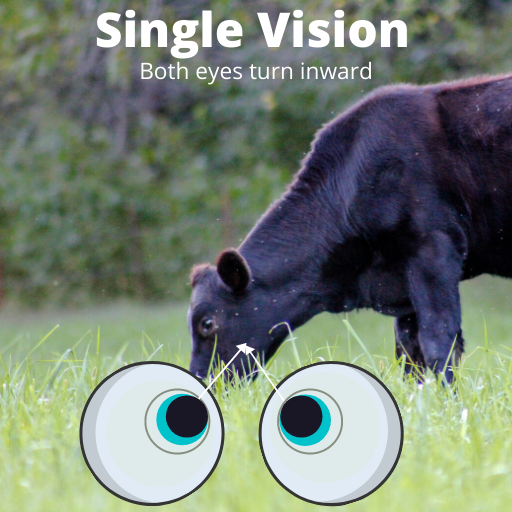
Higher Rate of Visual Processing Difficulties
In addition to a higher risk of hearing loss, children diagnosed with autism also have a higher rate of visual processing difficulties when compared to other neurodevelopmental disorders. Unfortunately, there is no routine screening for visual processing difficulties. Often, a parent and even the individual may be unaware there is an eye turn. When there is blurry or double vision, people tend to avoid what feels uncomfortable or causes unclear vision. However, there are behavioral clues that parents and professionals can learn.
Actions You Can Take
Cheri created the Moore Auditory-Visual Observation Activity Booklet to teach others how to recognize auditory and visual processing difficulties. Learn how to observe and what to observe. When strabismus is intermittent, it can be missed by parents and professionals.
Strabismus causes unusual postures. Because, changes in head position can align the eyes. Strabismus can be intermittent or chronic.
Intermittent strabismus occurs when one eye grows tire after having to focus on a target. When the eye tires, it moves up or down, right or left. The pictures below show you different eye postitions. Because adults tend to look at the book with the child, strabismus is not seen. Cheri teaches you how to look at their eyes.
- Strabismus can occur in just one eye and never in the other eye.
- In contrast, strabismus may occur in each eye, one eye at a time.
When chronic strabismus occurs in both eyes, it is often referred to as crossed eyes. This condition is easier to see. Strabismus in one eye is more difficult to see, especially when intermittent.
A Developmental Vision Exam
When there are learning difficulties, the best course of action is a comprehensive visual evaluation by a developmental behavioral optometrist or neuro-rehabilitation optometrist. Despite intelligence, students are unable to easily work at their level of intelligence when there are visual processing difficulties. Thus, emotional distress is felt. In conclusion, vision therapy stimulates visual neural pathways strengthening eye muscles needed to stabilize eye position and movement.
Research Evidence
Researchers found significantly higher rates of strabismus in children with autism. Out of 7,640 families, 18% of boys and 29% of girls had strabismus when compared to children without a diagnosis of autism; 2% of boys and 4% of girls. (Kaplan, M., Edelson, SM., Rimland, B., (1999). Strabismus in autism spectrum disorder. Focus on Autism and Other Developmental Disabilities. V14 n2 p101-05.)

Strabismus and Autism
In another study, researchers found a significantly higher rate of strabismus in 44 children with autism (5 out of 44) when compared to no strabismus found in 44 typically developing children. (Milne, E., Griffiths, H., Buckley, D., Scope, A., (2009). Vision in children and adolescents with autism spectrum disorder: evidence for reduced convergence. Journal of Autism and Developmental Disorders, 39(7); 965-975)
Annabel Stehli
Annabel Stehli moved with her daughter to France to receive Berard Auditory Training from Dr. Berard. Later, Annabel Stehli invited Dr. Berard to come to the United States. I am forever grateful for her work and efforts to have Berard Auditory Integration Training approved for educational intervention by the FDA. Today, advancement continues in the field of auditory integration training.
Although stories are of indivuals with autism benefitting from Berard Auditory Integration Training, they are a source of great encouragement for all parents of children with neurodevelopmental disabilites. Because, sound intolerance frequently occurs in individuals with a neurodevelopmental disability.

Overcoming CAPD with Autism
My daughter was diagnosed with autism and central auditory processing disorder (CAPD). We schooled her at home, and even with my background in teaching, it was very difficult. I would have to fight with her to make her begin her school work. While teaching her, she...
A Future for My Daughter: Diminishing L.D. / Sound Sensitivities
Ashylyn did not talk much when she was little and was shy about interacting with people. I sent her to a private Christian school for kindergarten hoping she would come out of her shell. Unfortunately, there were more problems than just shyness. I remember feeling...
CAPD Diagnosis at 21 years; Success with Hearing Aids and AIT
Finding out that my 21-year-old son had a hidden hearing loss (CAPD) was a relief. He is very intelligent. Not getting the right help was causing feelings of depression and hopelessness. Finally, an answer to the questions I have had for so long! He never really fit...
A Relieved Grandmother: CAPD Success with Hearing Aids
I was at my wit’s end when I met Cheri Moore. My oldest granddaughter, whom I had guardianship, had been tested for every possible psychological learning disability, including autism. She was prescribed medication, which did not seem to help. Still, no diagnosis. I...
A Mother’s Journey Into the World of Dyslexia
Diagnosing Dyslexia During the spring of 2007, I attended Dianne Craft’s conference where I learned that dyslexia affected the auditory processing center and the visual processing center. Perhaps I had found help for my daughter’s reading and spelling struggles. She...


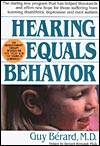

A Grateful Mom, Northern Virginia, 2019